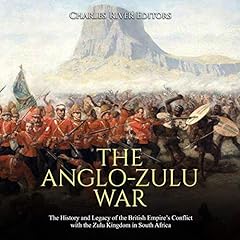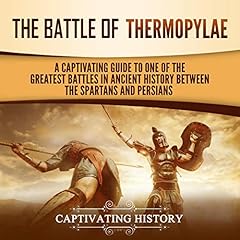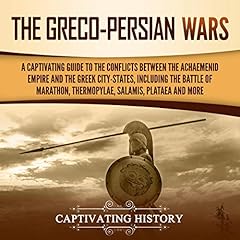
The Battle of Zama
The History of the Battle Between Rome and Carthage That Decided the Second Punic War
Failed to add items
Add to basket failed.
Add to wishlist failed.
Remove from wishlist failed.
Adding to library failed
Follow podcast failed
Unfollow podcast failed
£0.99/mo for first 3 months
 Prime members: New to Audible? Get 2 free audiobooks during trial.
Prime members: New to Audible? Get 2 free audiobooks during trial.
Buy Now for £6.99
No valid payment method on file.
We are sorry. We are not allowed to sell this product with the selected payment method
-
Narrated by:
-
Daniel Houle
About this listen
It is rare to find a single battle that is truly decisive in shaping the course of subsequent history, but occasionally, a battle becomes pivotal in retrospect, defining and shaping what comes after it. The Battle of Zama, which pitted the army of the Roman Republic against the forces of Carthage on the plains of North Africa, was one such battle, and it featured two of history’s greatest generals on opposing sides.
Fought between two empires for hegemony in the Mediterranean and beyond, the victor would become the most important power in the region and dominate the civilized world for centuries, while the loser would decline in power and vanish almost completely in less than 100 years.
Carthage was one of the great ancient civilizations, and at its peak, the wealthy Carthaginian empire dominated the Mediterranean against the likes of Greece and Rome, with commercial enterprises and influence stretching from Spain to Turkey. In fact, at several points in history, it had a very real chance of replacing the fledgling Roman empire or the failing Greek poleis (city-states) altogether as master of the Mediterranean.
Although Carthage by far preferred to exert economic pressure and influence before resorting to direct military power (and even went so far as to rely primarily on mercenary armies paid with its vast wealth for much of its history), it nonetheless produced a number of outstanding generals, from the likes of Hanno Magnus to, of course, the great bogeyman of Roman nightmares himself: Hannibal.
Although the Romans gained the upper hand in the wake of the First Punic War, Hannibal brought the Romans to their knees for over a decade during the Second Punic War. While military historians are still amazed that he was able to maintain his army in Italy near Rome for nearly 15 years, scholars are still puzzled over some of his decisions, including why he never attempted to march on Rome in the first place.
While Hannibal had been in Italy, it had been relatively easy for the Carthaginian oligarchy, particularly the Hundred and Four, a federation of powerful traders, and Hannibal’s chief political rival, Hanno the Great, to marginalize him. For years, his political party, the Barcids, had struggled to obtain even a token amount of funds and troops for his enterprise, but Hannibal’s arrival on the scene changed all that.
On October 19, 202 BCE, on the plain of Zama in modern Tunisia, battle was joined, and for the first time in one of the battles of the Second Punic War, Hannibal had the infantry advantage, and Rome had the cavalry advantage. The result would decide the fate of the Second Punic War and the course of history.
While he remains far less known than Hannibal, Publius Cornelius Scipio, the man who has become known to history as Scipio Africanus, is widely regarded as one of the greatest military leaders of all time. In the space of less than 10 years, the genius of Scipio took Rome from being on the brink of utter destruction to becoming the dominant power in the Mediterranean. He displayed not just acute understanding of the tactical needs of the battlefield, but also a strategic overview that consistently allowed him to confound his enemies. Scipio has been described as “the embodiment of grand strategy, as his campaigns are the supreme example in history of its meaning".
The Battle of Zama: The History of the Battle Between Rome and Carthage That Decided the Second Punic War examines one of antiquity’s most important battles, from its origins to its aftermath.
©2020 Charles River Editors (P)2020 Charles River Editors

















